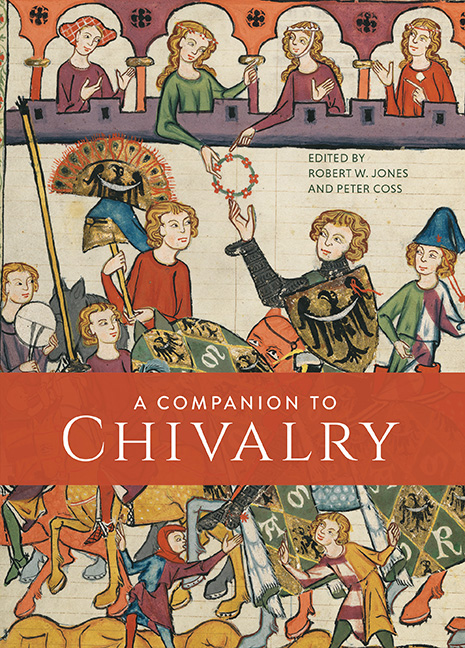Book contents
- Frontmatter
- Contents
- List of Illustrations
- List of Contributors
- Introduction
- 1 The Origins and Diffusion of Chivalry
- 2 The Organisation of Chivalric Society
- 3 The Secular Orders: Chivalry in the Service of the State
- 4 The Military Orders
- 5 Marshalling the Chivalric Elite for War
- 6 Chivalric Violence
- 7 Chivalry in the Tournament and Pas d'Armes
- 8 Heraldry and Heralds
- 9 Arms and Armour
- 10 Constructing Chivalric Landscapes: Aristocratic Spaces Between Image and Reality
- 11 Gendered Chivalry
- 12 Chivalric Literature
- 13 Manuals of Warfare and Chivalry
- 14 The End of Chivalry? Survivals and Revivals of the Tudor Age
- 15 Chivalric Medievalism
- Select Bibliography
- Acknowledgements
- Index
9 - Arms and Armour
Published online by Cambridge University Press: 24 October 2019
- Frontmatter
- Contents
- List of Illustrations
- List of Contributors
- Introduction
- 1 The Origins and Diffusion of Chivalry
- 2 The Organisation of Chivalric Society
- 3 The Secular Orders: Chivalry in the Service of the State
- 4 The Military Orders
- 5 Marshalling the Chivalric Elite for War
- 6 Chivalric Violence
- 7 Chivalry in the Tournament and Pas d'Armes
- 8 Heraldry and Heralds
- 9 Arms and Armour
- 10 Constructing Chivalric Landscapes: Aristocratic Spaces Between Image and Reality
- 11 Gendered Chivalry
- 12 Chivalric Literature
- 13 Manuals of Warfare and Chivalry
- 14 The End of Chivalry? Survivals and Revivals of the Tudor Age
- 15 Chivalric Medievalism
- Select Bibliography
- Acknowledgements
- Index
Summary
The chivalrous were duty bound to use force against all opponents of their code. For exponents such as Geoffroi de Charny, good knights would inevitably receive many fractures and wounds in the maintenance of the order of chivalry. Appropriate equipment was, therefore, essential to the warrior. This chapter will be devoted to an examination of the weapons and armour used by the chivalric warrior. Which weapons and armour were considered chivalrous and which were not? How did the use, origin, style, fit, movement, and even the sound, of these objects ensure one would be considered part of the chivalric elite? How important was training? With such questions in mind I will employ a mixture of written primary sources and surviving examples of material culture to provide an insight into the world of the chivalric warrior. I will examine the major items of weaponry and armour one by one.
The Sword
This was the most important weapon to the chivalrous. Throughout the early middle ages it was a special weapon, the sheer quantity of iron used in its manufacture and the skill required to produce a functioning sword made it the weapon of the warrior elite. The making of swords had long been imbued with a mystique that often made them appear magical, and the heroes of epic and romance invariably bore weapons of special significance – throughout the centuries all would have known of the great deeds done by Roland with Durendal and by Arthur with Excalibur. The connection of the sword with the elite warrior continued into the chivalric period. The sword was girded about the waist as part of the knighting ceremony. Swords were blessed as part of the ceremony and the weapon's obvious resemblance to the Cross on which the Saviour died was picked up on by such exponents as Ramon Llull. The two sharpened edges of the blade, for de Charny, were a constant reminder that the wielder must always protect and uphold righteousness, reason and justice.
The ‘armyng swerde’ was a constant companion borne at the hip [fig. 1]. The longsword, by contrast, came into use in the later medieval period and was wielded in one or two hands. A ‘long sutill espeie p[u]r la guerr’’ was the gift of the Black Prince in the 1350s.
- Type
- Chapter
- Information
- A Companion to Chivalry , pp. 159 - 186Publisher: Boydell & BrewerPrint publication year: 2019



